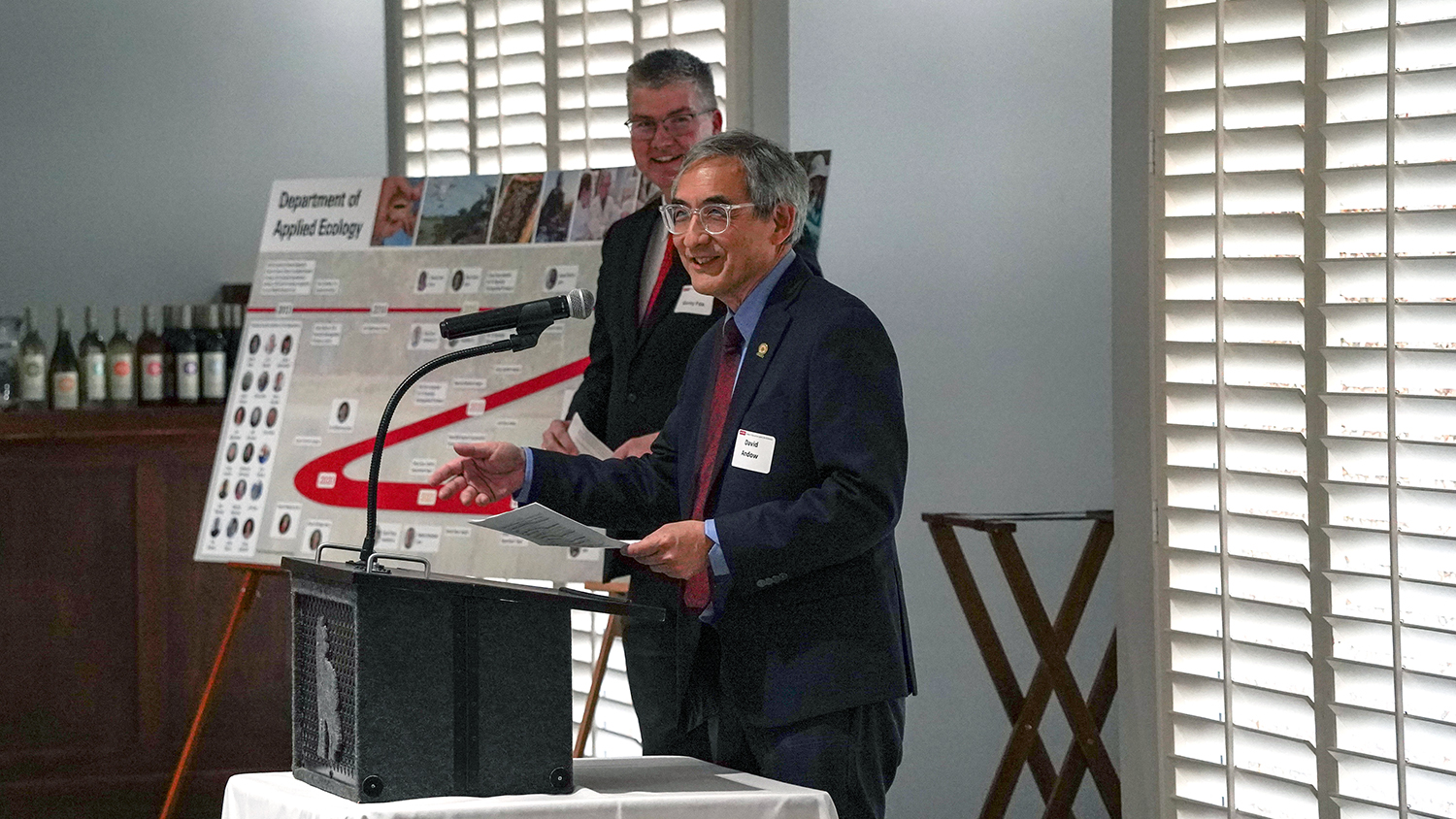Strategy to inhibit ovarian cancer in hens could benefit human health
N.C. State University graduate student Elizabeth Harris earned her 2011College of Agriculture and Life Sciences bachelor’s degree in animal science and is a master’s degree candidate in the university’s Physiology Graduate Program.
After this summer, when she completes her degree in the program, her plan is to go into scientific research in the field of reproductive biology.
It’s a career apparently already in progress, as illustrated by her research presented at the 2013 Graduate Student Research Symposium at N.C. State.
Harris, who is from Raleigh, presented her study of a strategy that could inhibit the initiation and progression of ovarian cancer in a hen – a procedure with potential human cancer prevention applications – in “Rescue of Mutant p53 by CP-313898 Prevents Spontaneous Ovarian Cancer in the Domestic Hen,” her poster display of the research methods and findings.
Ovarian cancer is associated with a reduction or loss of function in the p53, a tumor suppressor gene, which plays an important role in inhibiting the uncontrolled cell proliferation that is associated with cancer. The synthetic styrylquinazoline CP-31398 has been found to restore p53-DNA binding in mutated cells to prevent tumor growth, but it has not previously been studied in a spontaneous ovarian cancer model.
Harris’ study demonstrates the effect of CP-31398 on the spontaneous development of ovarian adenocarcinoma (a cancerous tumor found on epithelial tissue) in the 2-year-old laying hen.
“It’s a large-scale clinical trial assessing the effects of the chemopreventive compound CP-31398 on ovarian cancer rates, using the 2-year-old hens as a model for the pre-menopausal woman,” Harris says.
Among the conclusions and implications of the study, she notes why the hen is an excellent model for the pre-menopausal woman.
“By the time a woman reaches menopause, she has experienced approximately the same number of ovulations as the 2-year-old hen, and presumably the same amount of damage to the ovarian tissue epithelium. Like the human, the hen develops ovarian neoplasms spontaneously,” says Harris.
In the course of her study, “the hens were provided with feed containing various amounts of CP-31398 for 23 months and were necropsied to assess the incidence of cancer for each treatment group,” she says.
Among the key results: “We saw up to a 77 percent lower incidence of ovarian cancer in treated versus untreated hens.”
Harris notes among her study conclusions that CP-31398 is an “ideal pharmacological treatment for the prevention of ovarian cancer through the stabilization of p53 tumor suppressor, because it specifically targets the ovary” and that “the p53 rescue compound CP-31398 can be used as a means of ovarian protection in the adult hen and may eventually be an applicable cancer prevention treatment for women.”
There are “certainly potential clinical applications in the women’s health field for a chemopreventive compound that has a protective effect on the ovary,” Harris says. “Ovarian cancer can be an extremely devastating disease. In 2011, the American Cancer Society estimated a 5-year survival rate of 44 percent for the average woman diagnosed with ovarian cancer.
“Effective chemoprevention and risk reduction are the first defenses against such a lethal disease.”
Noteworthy collaborators and mentors in Harris’ research are Dr. Paul Mozdziak, director of the N.C. State Physiology Graduate Program; CALS’ Dr. James Petitte and Dr. Kenneth Anderson, Prestage Department of Poultry Science; Dr. Oscar Fletcher, CVM Department of Population Health and Pathobiology; and Dr. Levy Kopelovich, Division of Cancer Prevention at the National Cancer Institute.
Harris adds that it was enrollment in the Physiology Graduate Program that “provided me with the opportunity to work on a project that is so relevant to women’s health.”
−Terri Leith


